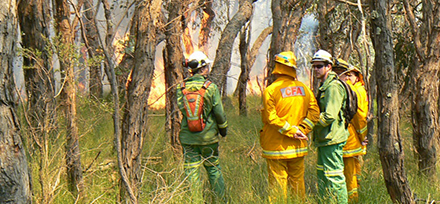Two things seem certain this coming summer.
The first, without doubt, is that it is going to be a very, very hot summer. The Bureau of Meteorology has warned that it is likely this summer will be hotter than average and certainly hotter than the past three years.
The second, as night follows day, is that there will be bushfires.
Climate and bushfire experts have said that the drier and hotter conditions associated with El Niño will raise the risk of dangerous bushfires.
And according to the Bureau, the risk of a significant fire danger season in south-east Australia is significantly higher after an El Niño year, particularly when combined with a positive Indian Ocean dipole (IOD) event.
New South Wales, Queensland and Tasmania have already had a taste of what may come.
In Victoria there are claims that fuel loads are reaching alarming levels.
The Nationals Eastern Victoria MP and Shadow Parliamentary Secretary for Public Land Use, Melina Bath labelled the Andrews Government’s management of fire risk as “utterly irresponsible”.
“Under Labor’s so called ‘Safer Together’ policy statewide target of 70% residual risk entire regions face a summer bushfire season of unacceptable high fire danger.”
Gippsland East Nationals MP Tim Bull says former firefighters, timber industry and bush workers and even State Government Departmental staff have warned him that Eastern Victorian was facing a mega-fire and it was because fuel loads were now out of control.
Controlled burns still seem to be a major solution to helping eliminate fuel loads but this either has not been carried out, has not been carried out properly, or not carried out in the right areas.
And then there is the disaster-in-waiting at the Wombat State Forest north of Melbourne.
The Weekly Times has reported that despite calls for action, dating back to early last year, little progress has been made on clearing fallen trees left lying on the Wombat Forest floor since they were bowled over by June 2021 storms.
The Weekly Times report said that recent analysis shows about 600,000 tonnes of fallen trees, spread across 2500ha at densities ranging from 200 to 240 tonnes per hectare.
The fallen timber load across another 20,000ha of the Wombat Forest sits at close to 100t/ha, compared with undamaged forest loads of 20 to 50 tonnes per hectare.
The nation’s top bushfire scientist, University of Melbourne Associate Professor Kevin Tolhurst told The Weekly Times the fallen timber risks fuelling a fire storm that would engulf nearby towns.
Yet despite these warnings VicForests’ attempts to clear the Wombat forest of fallen timber have been repeatedly stymied by government bureaucrats, legal action by environmental groups, protests and vandalism of contractors’ heavy machinery.
The Wombat Forestcare Group has even lodged a summons with VicForests trying to block local firewood cutters Dale Tiley and Gary Kirby salvaging fallen trees from a 20ha site in the Wombat Forest.
Forest and Wood Communities Australia Executive Officer Mick Harrington says the lack of concern for family-owned businesses with limited resources is unsurprising.
“It is clear to me that the decision to pursue family-owned firewood businesses is completely out of touch with everyday Victorians – the Wiley family is simply using a storm induced available resource to supply much needed affordable firewood resource to local communities and deliver a reduction to fire risk for local farmers and residents,” Mr Harrington said.
No doubt the good folk of the Wombat Forestcare Group will be manning the firetrucks when the inevitable fire breaks out.
As Mr Harrington points out, one thing is clear.
The march of militant environmental groups never stops – with Victorian family-owned businesses and community safety now firmly under attack.






